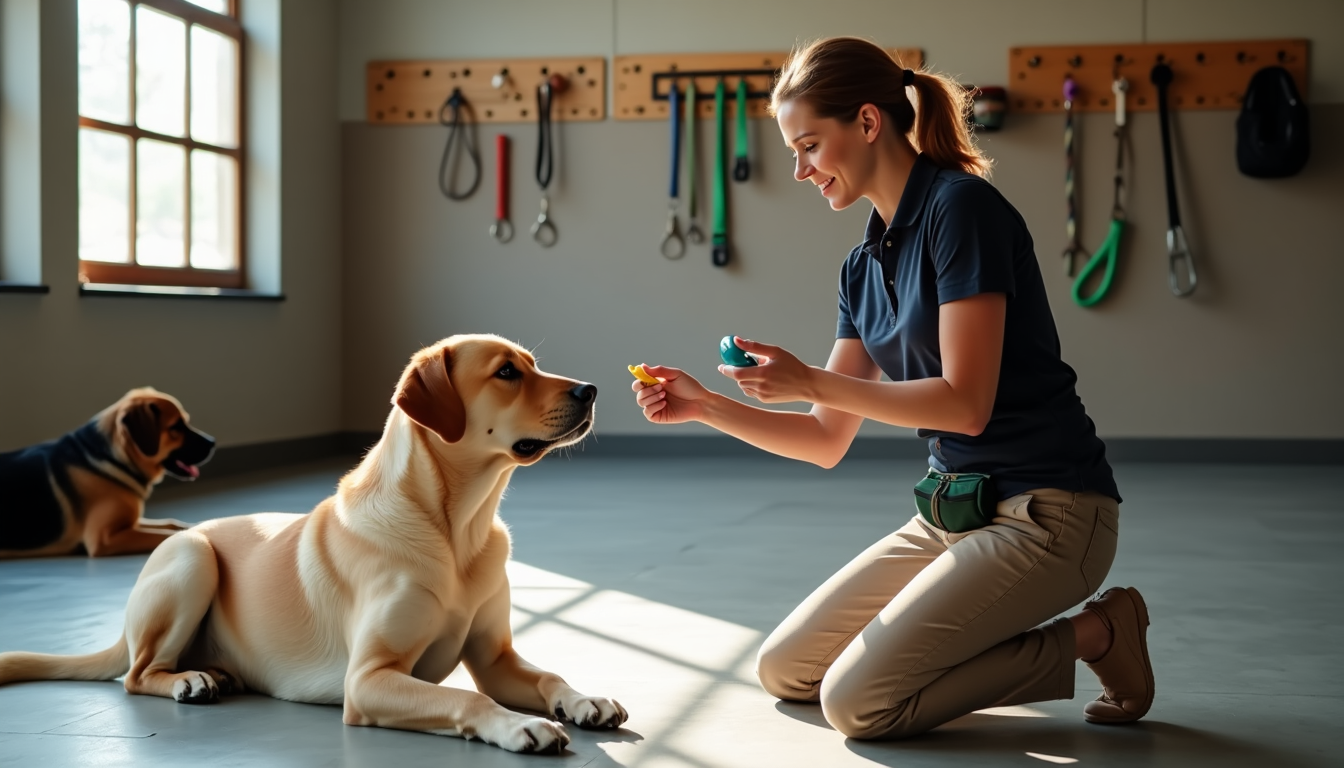Did you know that 75% of dog owners wish they could change their pet’s behavior?
Your dream of having a perfect furry companion can quickly become challenging when faced with excessive barking, chewing, or separation anxiety. Aggression remains the most concerning behavioral issue that could create dangerous situations for pets and their owners alike.
Dog behavior problems can be incredibly frustrating. If you’re struggling, our detailed guide will help you fix dog behavior by identifying triggers and using effective training techniques. Learn how to manage barking, aggression, and anxiety to turn your challenging pet into a well-behaved companion.
Understanding Common Dog Behavior Problems
At the time you want to understand your furry companion, the ability to tell typical dog behaviors from genuine problems sets the foundation for a harmonious relationship.
Identifying normal vs. problematic behaviors
Dog owners don’t deal very well with distinguishing normal canine behavior from true behavioral issues. Veterinary experts suggest we should assess behaviors based on the dog’s species, age, breed, environment, and health status. To name just one example, chewing is perfectly normal for puppies, but it might signal anxiety or medical issues in a 9-year-old dog.
Separation anxiety ranks among the most discussed dog behavior problems. Dogs show this through vocalization, destructive chewing, and inappropriate elimination when left alone. True separation anxiety follows specific patterns. The dog becomes anxious during pre-departure routines and misbehaves within 15-45 minutes after the owner leaves. These dogs also tend to follow their owners constantly.
Aggression remains the most serious behavior problem in dogs that shows through growling, snarling, showing teeth, lunging, and biting. This problem accounts for approximately 70% of behavior cases in referral practices across North America. The USA alone reports at least 5 million people need hospital treatment for dog bites each year.
The impact of breed and age on behavior
People often think breed determines personality, but research points to a more complex picture. A complete study found that breed explains just 9% of behavioral variation in individual dogs. All the same, certain tendencies exist. Terriers’ behavior typically includes more predatory actions and dog-directed aggression, while herding breeds’ traits show increased environmental sensitivity.
Age substantially affects behavior patterns. Dogs reach their “senior” status around seven years. Smaller breeds might not show aging signs until 10-12 years, while giant breeds could develop senior-related issues by 5-7 years. Senior dogs often experience cognitive changes that affect memory, awareness, and sensory function. These changes can lead to disorientation, altered sleep patterns, and inappropriate elimination.
How health issues affect dog behavior
Medical conditions often show up as behavioral changes. Pain leads the list of culprits that cause aggression, fear, anxiety, vocalization, inappropriate elimination, and repetitive behaviors. Thyroid hormone imbalances also affect behavior because the brain serves as a major target organ for these hormones.
Health problems that affect behavior fall into four main groups: issues that change environmental perception (blindness), problems that affect information processing (brain tumors), conditions that trigger stress responses (pain), and issues that prevent normal behavior expression (mobility limitations).
Your veterinarian’s consultation becomes vital to rule out medical causes before trying behavioral modification techniques.
Assessing Your Dog's Behavior Issues
A proper assessment of your dog’s behavioral challenges is the foundation for successful training. Your systematic approach will help identify what causes dog behavior problems instead of making guesses.
Keeping a behavior journal
A behavior journal is a great way to get insights that you simply can’t remember without documentation. This journal helps you spot specific patterns that might slip through the cracks. You should include details such as:
- Reactions to specific stimuli (other dogs, people, environments)
- Times and circumstances of problematic behaviors
- Success and failures in training attempts
- Changes in routine or environment
Your written record lets you analyze progress objectively rather than depending on general impressions.
Recognizing triggers and patterns
Dogs excel at recognizing patterns and they learn from consequences while analyzing their environment constantly. They sort outcomes into two categories: desirable ones they want to repeat and undesirable ones they aim to avoid. Dogs might need several repetitions to learn positive patterns, but a single frightening experience can leave a lasting impression.
Dogs feel secure and confident with consistent patterns. Their behavioral problems often stem from unpredictable routines because they struggle to understand what’s expected of them. Your relationship with your dog grows stronger with more structure in their life.
When to consult a professional trainer
You need professional help if behavior problems continue despite your best efforts. Watch out for warning signs like aggression, persistent fear, destructive behaviors when alone, or situations where handling your dog feels unsafe.
Take time to research trainers’ methods before making your choice. Certifications show a steadfast dedication to education, but they’re just one factor to think over. Look through their online content, watch their training videos, and ask their clients for referrals. A good trainer should know positive reinforcement techniques and explain their training philosophy clearly.
Effective Training Techniques for Behavior Modification
Your dog’s problematic behaviors can improve with the right training techniques. A proper assessment of the issues helps you implement behavior modification methods that lead to success.
Positive reinforcement strategies
Modern dog training’s life-blood revolves around using rewards to boost desired behaviors. Dogs learn through consequences – they tend to repeat actions that bring them rewards they value. This science-backed method really works.
These rewards can include:
- Treats (small, tasty bits given right after good behavior)
- Verbal praise (“Good boy!” or “Well done!”)
- Fun time with favorite toys
- Gentle petting or belly rubs
This method builds what you want instead of punishing unwanted actions. Dogs learn to try new behaviors without fear when trained with positive methods. They become eager partners in their learning journey.
Redirection methods for unwanted behaviors
Redirecting your dog’s focus from bad habits to good ones works better than punishment. This approach helps manage common behavior problems naturally.
Quick intervention matters when your dog misbehaves. To name just one example, give your dog a proper chew toy when furniture chewing starts. The same goes for leash pulling – stop walking or turn around while calling your dog back.
Success depends on perfect timing. Get your dog’s attention before the bad behavior takes hold. Use a cheerful voice to call their name since harsh tones don’t work. Give them something else to do and reward good choices.
Consistency and timing in training
Perfect timing makes all the difference in training success. Research shows you have just over a second to respond to make your message clear. Your dog needs to connect their action with your response quickly.
The core team must work together using the same commands and methods. Mixed signals confuse dogs – one person saying “sit” while another says “siddown” creates uncertainty.
Dogs thrive on clear patterns and routines. Random responses create confusion and slow down progress. Short training sessions of about 5 minutes work best when done often. Always end while your dog stays interested.
Addressing Specific Behavior Problems
Let’s tackle your dog’s biggest behavior challenges with proven solutions that work.
Solutions for aggression and fear-based behaviors
Dogs show aggression because they’re scared, anxious, or frustrated. Your first priority should be safety by avoiding situations that make your dog aggressive. Scared dogs need a quiet retreat they can use to feel safe. Desensitization and counter-conditioning help change your dog’s response to scary things. To cite an instance, see how linking scary triggers with good experiences helps – just keep enough distance so your dog stays calm.
Don’t punish aggressive or fearful behavior as that makes things worse. Reward calm behavior and teach better ways to respond. A veterinary behaviorist can help with serious cases.
Fixing jumping, barking, and leash pulling
Your dog barks a lot because they’re trying to tell you something. Find out why – they might be bored, alarmed, want attention, or feel anxious when alone. Teach them to be “quiet” by waiting for a pause in their barking and rewarding that silence right away.
The “four on the floor” rule stops jumping – only give attention when your dog keeps all paws on the ground. Just turn away if they jump, and reward them once they calm down.
Leash pulling stops if you freeze when the leash gets tight. Wait until it goes slack before you move again. You can also change direction without warning so your dog learns to watch where you’re going.
Managing destructive behaviors and house training issues
Bored or anxious dogs often chew things they shouldn’t. Give them proper chew toys and keep them busy with exercise and brain games. Make your home safe for puppies and watch them closely. Show them the right things to chew right away.
House training works best with a set schedule and a specific bathroom spot. Take your dog out early morning, after meals, and before bed. Give lots of praise when they go in the right place. Skip punishment for accidents – just clean spots really well with enzyme cleaners to remove any lingering smells.
Conclusion
Your dog’s behavior problems might feel daunting at first, but they become manageable with consistent training and the right approach. A solid foundation emerges when you understand your pet’s normal behaviors, track their patterns, and identify what triggers them.
Most unwanted behaviors come from natural canine instincts or health concerns. Positive reinforcement combined with patience and good timing will help reshape these behaviors effectively. Your dog naturally wants to make you happy – they just need clear direction on what you expect from them.
The training process demands commitment, calmness and consistency. Small goals lead to bigger achievements. Watch your dog’s responses and adjust your methods accordingly. Behavioral changes need time, but having a confident, well-behaved companion makes your efforts count.

